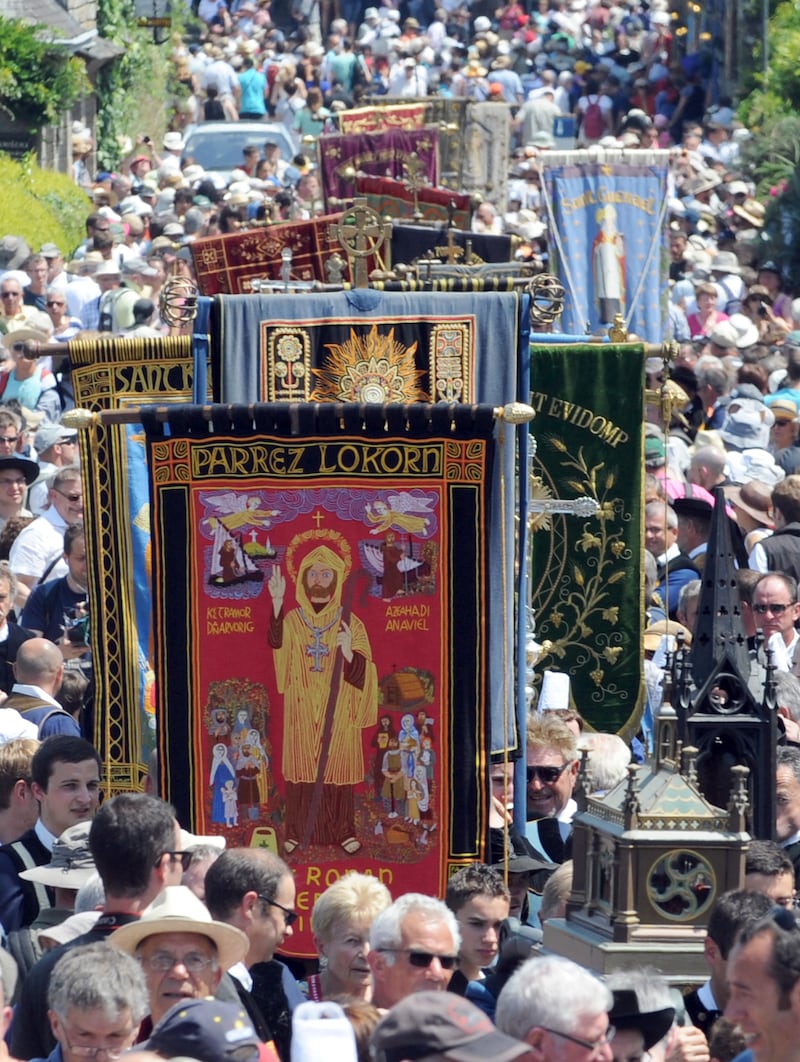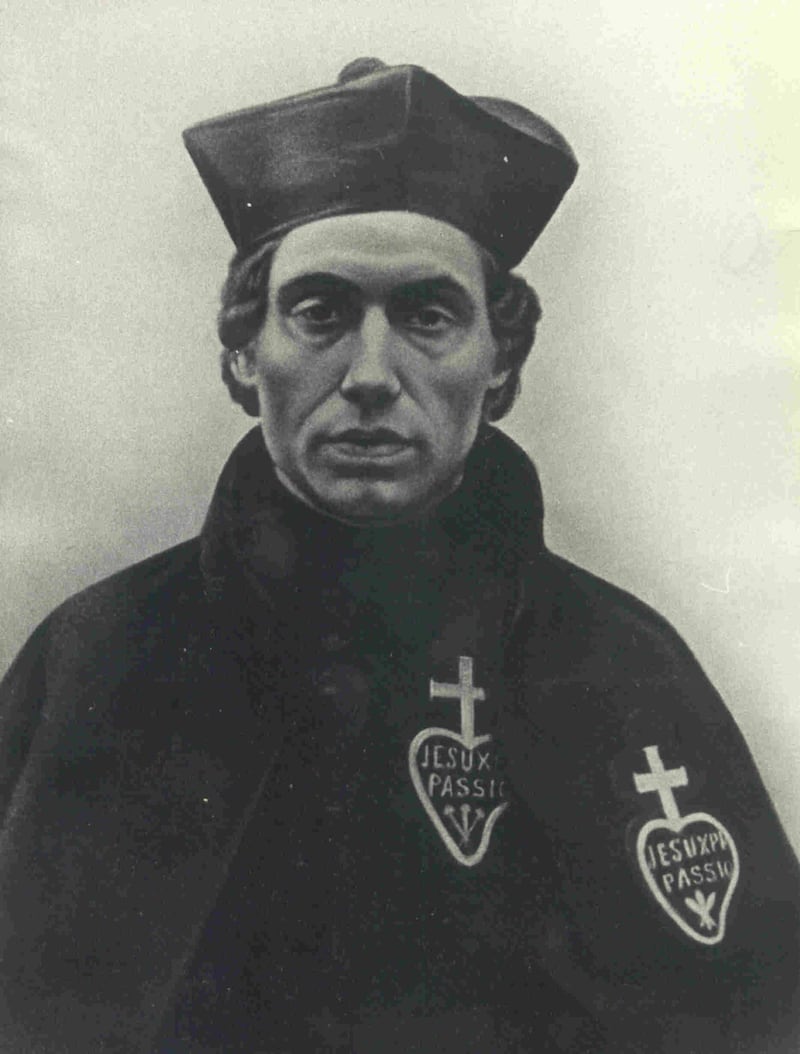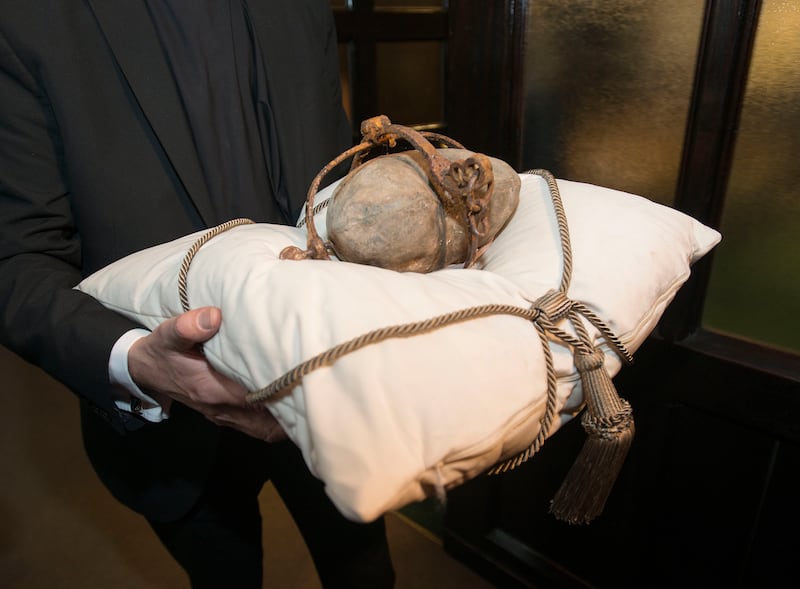Dymphna
Feast day: May 30th
Of all the saints on this list, Dymphna, who was born in seventh-century Ireland, had perhaps the most tragic life. Her story is one of violence, incestuous rage and madness, yet it is one with an unexpectedly uplifting epilogue. Her father was a petty king who suffered a mental breakdown after the death of his wife. In his delirium he tried to marry his daughter, so Dymphna fled Ireland for the town of Geel, in Belgium, where she founded a hospice for the destitute. Her father eventually caught up with her and beheaded her in a rage. As the patron saint of mental health workers and those suffering from mental illness, she leaves behind an astonishing legacy. To this day the people in the town of Geel welcome strangers with mental illnesses into their homes in honour of St Dymphna.
Ronan of Locronan
Feast day: June 1st

So much of what we hear about Irish saints relates to miracle and myth, but the wider history surrounding their lives is equally fascinating. For such a small, insular island, the influence some of these medieval pilgrims had on mainland Europe is remarkable. We may not be too familiar with St Ronan, but he has been venerated in Brittany since at least the 1030s. Choosing voluntary exile as a way of living closer to God, he left Ireland and settled near Névez, in northern France, to live a hermetic life – although that never really worked out, as he soon accrued a group of ardent followers and became embroiled in the fraught politics of the area.
Mél of Ardagh
Feast day: February 6th
Nephew of St Patrick, Mél was appointed one of Ireland’s earliest bishops after Patrick built the church at Ardagh. He lived a fascinating life, albeit not without its controversies. He received St Brigid’s profession as a nun and gave her the powers of an abbess. He was also accused of having a very inappropriate relationship with his aunt Lupait. St Patrick himself went to investigate these accusations – Mél proved his innocence by performing the miracle of ploughing a live fish from his field. Which all sounds fine and above board. Mél’s feast day is a celebration for single people, with traditions including sending yourself a St Mél’s Day card and having a party for your single friends.
Ailbe
Feast day: September 12th
Ailbe is said, similar to the myth of Romulus and Remus, to have been suckled by a she-wolf after being abandoned in a deep forest. But rather than go on to found a world-conquering empire, he dedicated his life to charity, feeding the poor and delivering influential sermons. The whole wolf thing isn’t even the most noteworthy aspect of Ailbe’s life: he also baptised St David, established a monastery at Emly, in Co Tipperary, and quite possibly visited the land of the faeries before his death in 528.
RM Block
Gobnait
Feast day: February 11th
The cult of Gobnait has undergone something of a renaissance in recent years, with more and more people celebrating her feast day each spring. A holy woman who established a church in Ballyvourney, Co Cork, she is the patron saint of bees and beekeeping. While this might seem a quaint, even trivial devotion, in sixth-century Ireland it was anything but. Bees were highly regarded not just for their honey (used in all manner of recipes and preserves, for medicinal purposes and to make mead) but also because, in Celtic lore, the soul leaves the body as a bee or a butterfly.
Why do people feel such an affinity for Gobnait? Is it because she sent a bunch of cattle raiders packing by attacking them with a swarm of bees? That’s pretty cool, admittedly, but more than likely not the answer. People need and want to feel connected, whether that’s to nature, to the land, to each other or, for the religious, to God. These connections give meaning to our lives, and surely that’s why modern minds, young and old, gravitate towards St Gobnait.
Lí Ban
Feast day: January 27th or December 18th
If you’ve read the fantastic Holy Shocking Saints by Síne Quinn and Margaret Anne Suggs, you’ll surely remember Lí Ban, the mermaid saint. When her family drowned in the flood that created Lough Neagh, she alone survived (along with her dog) in an underground cave. Wishing to be turned into a salmon, she was instead transformed into a mermaid and lived for 300 years. Eventually found by a passing boat, she was offered a choice: live for another 300 years or be baptised and die within the hour. She chose the latter and is now believed to be buried on Lough Derg.
Charles of Mount Argus
Feast day: January 5th

The next time you’re in or around Harold’s Cross, in South Dublin, spend a quiet moment at Mount Argus church, where you’ll find the tomb of Fr Charles, born. One of Ireland’s few modern saints (he was canonised in 2007 by Pope Benedict XVI), the Dutch Passionate priest, born Joannes Andreas Houben, was so well known for his healings and miracles that when he died, in 1893, his body lay in state for five days to accommodate all the mourners who travelled from across the country. In a letter to his family, the superior of the monastery wrote: “The people have already declared him a saint.”
Mantan
Feast day: November 1st
This St Patrick’s Day spare a thought for poor Mantan. When Patrick sailed to Ireland, Mantan was in that little boat beside him. But when they tried to land near Wicklow town, under the shadow of the Black Castle, they were not welcomed with open arms. Instead locals pelted them with rocks. Old Mantan got one right in the face, knocking out his front teeth. We don’t even know his real name – Mantan roughly translates as “Gubby” or “Gap-toothed”. He must have been delighted when that nickname stuck. Years later he had a falling out with Patrick and was sent back to Wicklow to spread the good word, hence his association with the county.
Colman
Feast day: October 29th
Colman Mac Duagh achieved a lot. Born in the sixth century in Galway, he lived as a hermit, built a church, founded the monastery of Kilmacduagh and was reluctantly ordained a bishop before dying in 632. But what stands out above all was his way with animals. He had a pet rooster that would wake him every morning in time to call the other monks to prayer, which was all well and good, but some of these monks also wanted to pray at night. So Colman trained a mouse to repeatedly wake him at midnight and 3am by nibbling on his ear. (Just so we’re all on the same page: the mouse nibbled Colman’s ear, not the other way around.)
Sourney
Feast day: May 3rd
Irish saints were known for all kinds of miracles, but a common theme is a close association with nature and animals. (The excellent Pilgrimage in Medieval Ireland blog has a whole series of posts on the topic.) St Sourney, also known as Sárnait, was a mysterious sixth-century holy woman known to resurrect animals, even after they had been eaten. One story details the time Sourney gathered the bones of a pig, to bring it back to life, only for a raggedy dog to disrupt the ritual by eating one of the bones (the tail bone, specifically, so explaining why all pigs have curly tails). As punishment, Sourney put a curse on the area so that a pig and a dog would never live together in Drumacoo.
Blath
Feast day: January 29th
Remember the bread baking craze during lockdown? Sure, people were bored and couldn’t go to the shops, but they also needed to reacquaint themselves with simple pleasures. When the world we have been sold is suddenly torn down, what are we left with? St Blath would have known the answer. Sister of St Brigid, she cooked at the convent in Kildare. Also known as Flora, Blath lived a simple life, taking time and pleasure in feeding the household and supporting her sister through thick and thin. Reading about Blath, it’s hard to miss a point made time and again: her humble bacon sandwiches were better than any banquet in any castle. So take a leaf out of Blath’s book. Knead some dough. Take your time. Look out of a window, and eat a nice sandwich.
Lorcán Ua Tuathail
Feast day: November 14th

Archbishop of Dublin at the time of the Norman invasion – and now the city’s patron saint – Lorcán Ua Tuathail (or Laurence O’Toole) highlights the strange and often morbid ways a saint’s legacy can survive. When a saint dies they leave behind relics. Strictly speaking, these are the mortal remains of the saint, but really it can be any object that has been in contact with the saint. So, for instance, the chains that bound St Paul before his martyrdom are relics on display in a church in Rome. But they can be anything, such as the head of St John the Baptist, the Shroud of Turin or, in this case, the heart of Lorcán Ua Tuathail. With his skull being brought to England, and his bones disappearing during the Reformation, his heart was returned to Ireland to be interred in Christ Church – until it was stolen, in 2012, only to mysteriously turn up in the Phoenix Park six years later.























